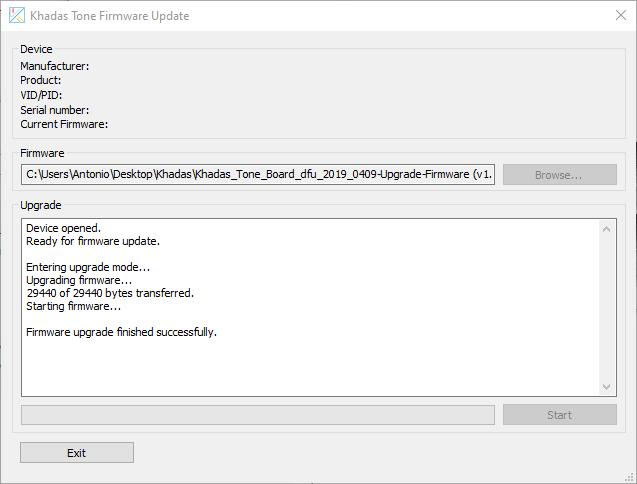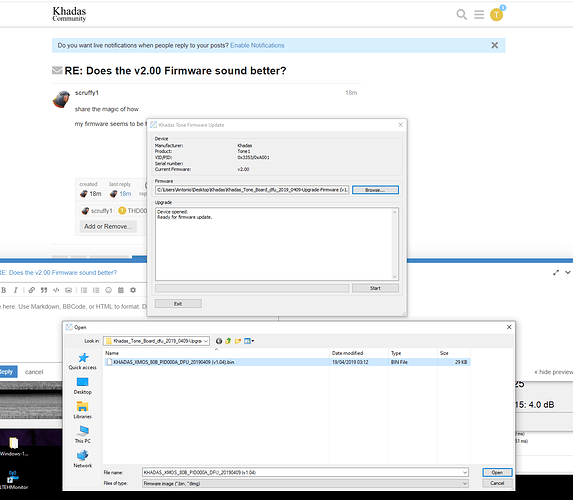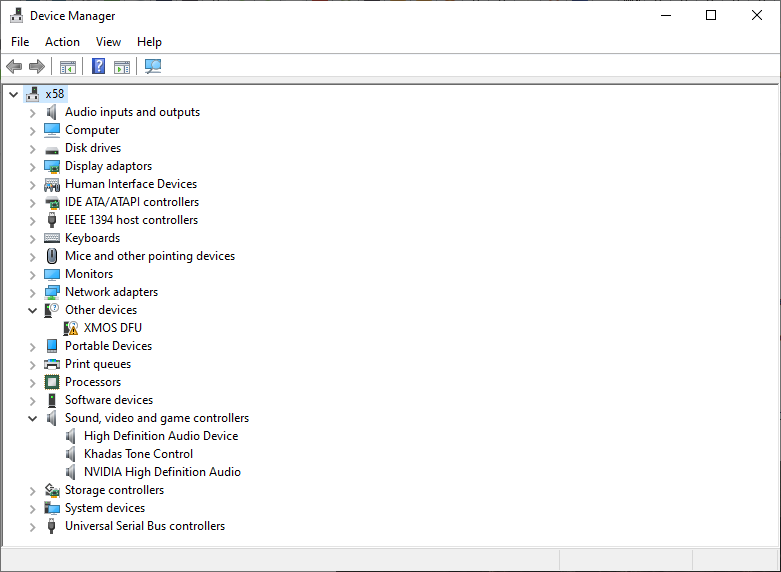I could take a little offence at your passive agression (I am British) I was simply stating the process from my own experience was not difficult.
As Alashikita has posted launch Khadas_Tone_DFU_Tool_V4.86.0_201118 open the KHADAS_XMOS_80B_PID000A_DFU_20190409 (v1.04).bin file and flash. Windows will auto configure and you should see XMOS DFU in device manager.


